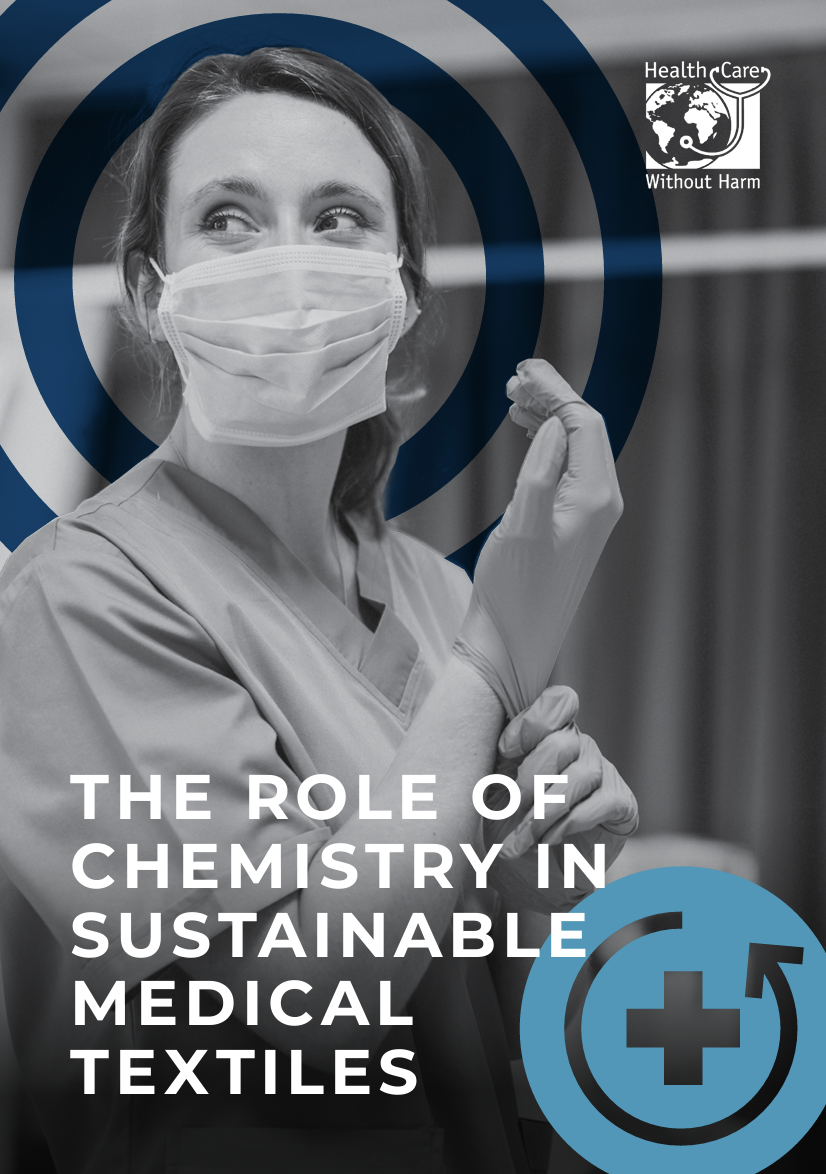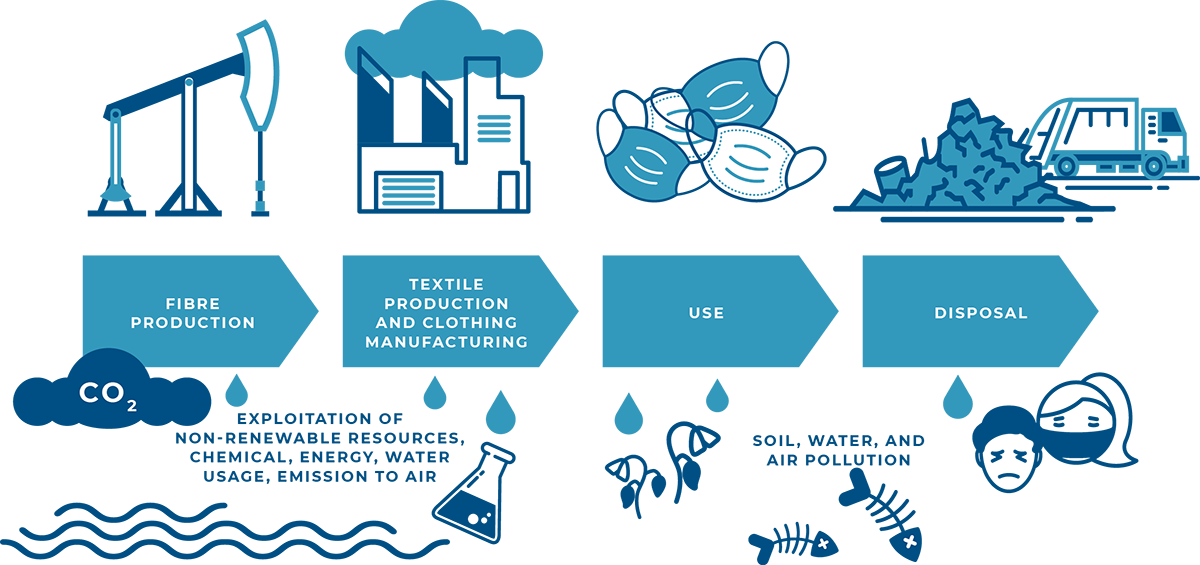
Medical textiles may contain hazardous chemicals, such as endocrine disrupting chemicals (EDCs) which cause adverse effects by disrupting the body’s endocrine system. Alongside the health threat, they pose a tangible risk to the environment throughout their life cycle. Intensive resource use, manufacturing, and disposal lead to pollution of air, water, and soil.
Medical textiles are commonly used in personal protective equipment (PPE) such as facemasks, gloves, and gowns, which are widely employed by the healthcare sector. The use of PPE has skyrocketed during the COVID-19 pandemic, with increased demand from both the healthcare sector and citizens. The associated increase in waste, greenhouse gas emissions, and use of toxic chemicals is a loud wake-up call that we need to build an EU textiles strategy to extend the circularity of medical textiles. This will accelerate the EU’s zero pollution action plan to reduce environmental pollution and help create a toxic-free environment in the European Union.
Chemicals of emerging concern, such as PFAS, flame-retardants, and antimicrobials, as well as other chemical substances, including formaldehyde, azo dyes, heavy metals, and organotin compounds, are extensively used in medical textiles. These toxic and harmful substances not only pose risk to workers during production, but they can also be released during use and disposal (typically incineration). Single-use products, in particular, cause significant environmental harm and there is greater scope for reducing overall toxicity in reusable textiles than in disposable items.
The EU Chemical Strategy for Sustainability has a pivotal role in phasing-out harmful chemicals and achieving a toxic-free environment by promoting the safer use of chemicals and sustainable procurement. HCWH Europe encourages and supports the European healthcare sector to substitute chemicals of concern in healthcare products with environmentally friendly alternatives wherever possible.
To support the exclusion of hazardous chemicals in medical textiles, we first need to understand which chemicals are present in materials and their impacts on the environment. With our latest Circular Healthcare publication, The role of chemistry in sustainable medical textiles, we assess the hazards associated with harmful chemical substances and determine whether it is necessary for medical textile’s functionality and performance. The report also provides recommendations for manufacturers, the healthcare sector and policy-makers: the main stakeholders that we believe need to work in synergy to bridge the current gaps.
Key messages
- We must further examine medical textiles to determine if their functionality and performance justify the continued use of hazardous chemicals.
- The entire value chain should be able to exchange information on chemicals used in production to improve traceability and further promote sustainable textiles.
- Withdrawing or minimising exemptions to use substances of very high concern in medical textile products will decrease the negative environmental and health impact of those products. This will further ensure higher safety and promote the use of non-toxic reusable and recyclable materials.
- Policy-makers should expand the availability of and reliance upon life cycle impact assessments of medical textiles and incentivise (re)adopting reusable and recyclable solutions within healthcare.
- The healthcare sector has an opportunity to influence markets and lead the transition towards toxics-free reusable textiles, without compromising on the safety and comfort of patients and staff.
